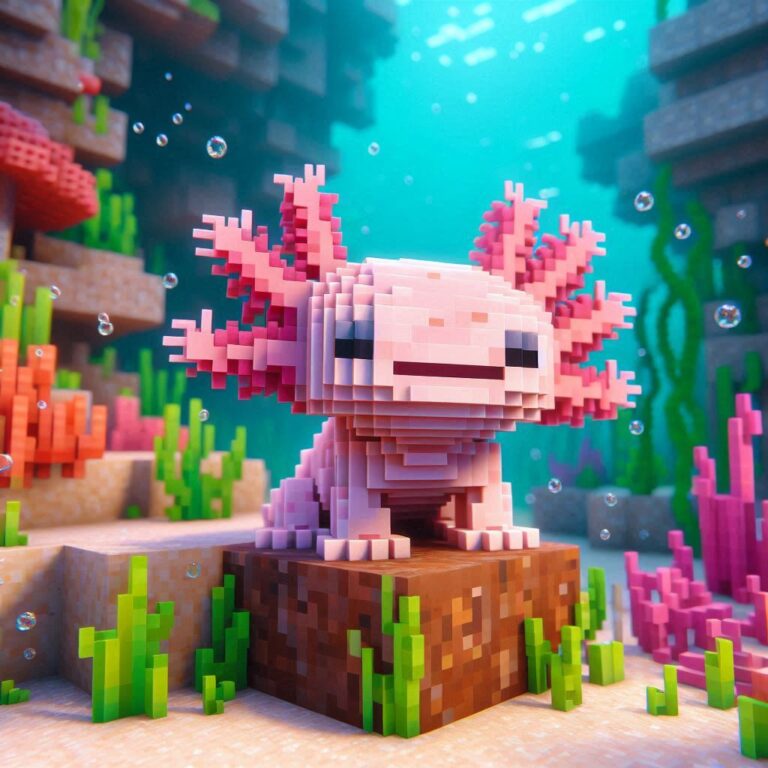
Axolotls are unique aquatic creatures that require proper care and attention to ensure their well-being and happiness. Understanding the signs of a happy axolotl, identifying factors that contribute to their happiness, and addressing potential issues in their environment are essential for responsible pet ownership.
Signs That Show Your Axolotl Is Happy
Axolotls, with their endearing appearance and charming personalities, exhibit various signs that indicate their happiness. One unmistakable signal is their active engagement with the environment. A content axolotl will display lively movements, exploring its habitat with curiosity. Additionally, observe their external gills – if they are fanned out and gently moving, it’s a positive sign of well-being. Another key indicator is the clarity of their skin. A healthy, happy axolotl boasts smooth, translucent skin without any lesions or irregularities.
Active Behavior
The activity level of your axolotl is a direct reflection of its overall well-being. An active axolotl is one that confidently swims around its tank, demonstrating a strong and coordinated movement. Keep an eye out for playful behaviors, such as chasing after prey or interacting with tank decorations. If your axolotl is regularly exploring its surroundings and displaying energetic swimming patterns, it’s a positive indication that it feels comfortable and secure in its environment.
Healthy Appetite
A thriving axolotl maintains a robust appetite, eagerly consuming the appropriate diet provided by its owner. Regular feeding sessions provide an opportunity to monitor their eating habits. Look for enthusiasm during feeding time, as a happy axolotl will actively pursue its prey, displaying a voracious appetite. Consistency in feeding patterns and a willingness to accept a variety of suitable food options contribute to the overall well-being of your aquatic companion.
Vibrant Coloration
The coloration of an axolotl serves as a dynamic canvas reflecting its emotional state. A happy axolotl often exhibits vibrant and consistent colors. Healthy individuals showcase a well-defined pattern with no signs of fading or discoloration. Factors such as proper nutrition, comfortable living conditions, and a stress-free environment play pivotal roles in maintaining the striking and vivid coloration that indicates a content and flourishing axolotl. Regular observation and attention to these details will ensure you can appreciate the full spectrum of colors your axolotl can display when in a state of happiness and well-being.
Things That Bring Happiness to the Axolotl’s Life
Ensuring the happiness of your axolotl involves creating an environment that mimics its natural habitat. One key factor is providing a proper tank setup. Axolotls thrive in spacious aquariums with secure hiding spots, soft substrates, and low-flow water conditions. By replicating their native surroundings, you contribute to their overall contentment and well-being.
Proper Tank Setup
The foundation for a happy axolotl lies in a thoughtfully designed tank setup. Start by selecting an aquarium of sufficient size, as cramped quarters can induce stress. Utilize a substrate of fine sand, allowing for ease of movement and comfortable burrowing. Incorporate hiding places, such as PVC pipes or aquarium decorations, to provide security and reduce anxiety. A well-maintained tank with proper filtration ensures a clean and healthy environment for your axolotl to thrive.
Enrichment Activities
Axolotls, despite their seemingly laid-back nature, benefit from mental and physical stimulation. Enrichment activities play a crucial role in keeping them engaged and happy. Introduce floating objects, live plants, or safe tank mates to stimulate their curiosity. Providing a variety of textures and structures encourages exploration, preventing boredom and promoting a more fulfilling aquatic experience for your axolotl.
Ideal Water Conditions
Maintaining optimal water conditions is paramount for the well-being and happiness of your axolotl. Keep the water temperature between 60-68°F (15-20°C) and invest in a reliable water heater to prevent fluctuations. Regular water testing helps monitor parameters such as pH, ammonia, and nitrate levels. Axolotls are particularly sensitive to changes in water quality, so a consistent and appropriate aquatic environment contributes significantly to their happiness and overall health. By prioritizing these aspects of care, you contribute to creating a thriving habitat where your axolotl can lead a fulfilling and content aquatic life.
Step-by-Step Process of Making Your Sad Axolotl Happy
Understanding and addressing the needs of a sad axolotl is crucial for fostering a healthy and content aquatic companion. The step-by-step process involves keen observation, thoughtful adjustments, and introducing positive changes to their environment.
Identifying Signs of Discomfort
The first step in revitalizing a sad axolotl is recognizing signs of distress. Watch for subtle changes in behavior, such as reduced activity, diminished appetite, or abnormal swimming patterns. Additionally, observe their gills for any irregularities. By identifying these indicators early on, you can pinpoint the specific issues causing discomfort and take appropriate actions to address them.
Adjusting Tank Parameters
Once signs of discomfort are identified, the next step involves assessing and adjusting tank parameters. Ensure the water temperature is within the recommended range of 60-68°F (15-20°C). Check the pH, ammonia, and nitrate levels, and make necessary modifications to maintain water quality. A comfortable and stable environment is essential for the well-being of axolotls, and small adjustments can make a significant difference in their overall happiness.
Introducing Positive Changes
Enriching the axolotl’s environment with positive changes is a key element in promoting happiness. Consider adding new hiding spots or rearranging existing tank decorations to provide a sense of novelty. Introduce live plants to enhance the aesthetics and simulate a more natural habitat. Additionally, ensure a varied and nutritious diet to boost their overall health and vitality. By actively engaging with your axolotl’s environment and introducing positive stimuli, you contribute to a more fulfilling and contented aquatic life.
Does Environment Affect Axolotl’s Health

The environment plays a pivotal role in the health and well-being of axolotls. Creating an optimal living space is essential for ensuring these fascinating aquatic creatures thrive. From water quality to temperature and humidity levels, every aspect of their environment can impact their health and longevity.
Impact of Water Quality
One of the primary factors influencing the health of axolotls is water quality. These amphibians are highly sensitive to changes in their aquatic surroundings. Regular testing for parameters such as pH, ammonia, nitrate, and nitrite levels is crucial. Poor water quality can lead to stress, diseases, and a decline in overall well-being. A well-maintained filtration system, routine water changes, and diligent monitoring contribute to a clean and stable aquatic environment, promoting the health and happiness of your axolotl.
Temperature and Humidity Considerations
Axolotls hail from cool, freshwater habitats, making temperature and humidity critical factors in their care. Keeping the water temperature between 60-68°F (15-20°C) is vital for their metabolic processes and overall health. Avoid exposing them to extreme temperatures, as both overheating and cold temperatures can be detrimental. Maintaining proper humidity, especially in the surrounding air, is also important to prevent dehydration and skin issues. Carefully controlling these environmental variables ensures your axolotl thrives and exhibits its natural behaviors, contributing to a healthier and more vibrant aquatic companion.
FAQs
1. How do I know if my axolotl is stressed?
Answer: Watch for signs such as lethargy, changes in appetite, or unusual behaviors.
2. Can I keep multiple axolotls in the same tank?
Answer: It’s possible, but consider the size of the tank and monitor their interactions closely.
3. What should I feed my axolotl?
Answer: Axolotls primarily eat live or frozen food, such as worms and small fish.
4. How often should I clean the axolotl tank?
Answer: Regular water changes and tank cleaning should be done every 2-4 weeks.
5. Can axolotls feel loneliness?
Answer: While they don’t necessarily get lonely, they can benefit from enrichment and social interactions.
6. Why is my axolotl not eating?
Answer: Possible reasons include stress, improper water conditions, or health issues; consult a vet if the problem persists.
7. What temperature is suitable for axolotls?
Answer: Axolotls prefer cooler temperatures, ideally between 60-68°F (15-20°C).
8. Are water filters necessary for axolotl tanks?
Answer: Yes, a good filtration system is crucial for maintaining water quality.
9. Can I use tap water for my axolotl tank?
Answer: Tap water can be used, but it should be treated to remove chlorine and other harmful substances.
10. How can I make my axolotl more active?
Answer: Provide a well-designed tank with hiding spots and introduce occasional novel items for stimulation.
Conclusion
In conclusion, ensuring the happiness and well-being of your axolotl involves a comprehensive understanding of their unique needs and characteristics. By recognizing the signs of a happy axolotl, creating an environment that fosters contentment, and addressing potential issues through careful observation and adjustments, you lay the foundation for a fulfilling aquatic companionship.
The proper tank setup, enrichment activities, and ideal water conditions contribute to a thriving habitat where axolotls can exhibit their natural behaviors and vibrant coloration. Regular monitoring of water quality, temperature, and humidity levels is paramount, as these factors directly impact the health of these fascinating aquatic creatures.

Hassan Shah carries over four years of hands-on expertise in caring for axolotls, guided by his cherished companion ‘Little Bruno,’ a thriving axolotl under his attentive care for three years.



